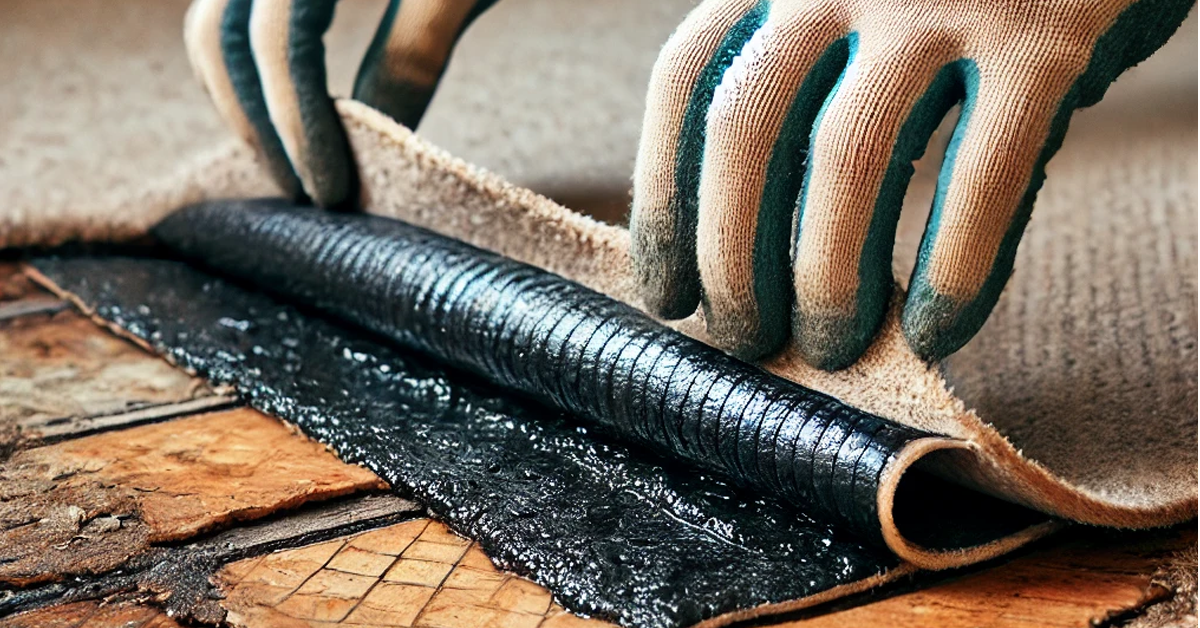TL;DR
Asbestos is often hidden in unexpected places beyond popcorn ceilings and flooring. Common sources include vermiculite insulation (which looks like kitty litter), silver paint roof sealants, CAB (rectangular cement asbestos board) siding, HVAC ducts wrapped in white fibrous tape, textured walls, and old fireproof doors. Asbestos may also be found in multiple flooring layers, undercoating of sinks, window putty in single-pane wooden windows, and older oil-burning boilers. Always contact a professional for testing and removal, as asbestos can be in many more materials than those listed here. This article is for information only, not advice.
Introduction
Asbestos was a common building material before 1970, primarily because of its fire resistance and strength. While most people know to check for asbestos in popcorn ceilings and flooring, it can also be found in many lesser-known places. This article explores these hidden areas of asbestos in homes and provides a useful checklist for buyers and renovators to help identify potential risks.
Asbestos in Insulation
Vermiculite insulation is one of the more commonly overlooked asbestos-containing materials. Used in attics, around pipes, and even in fireplaces, vermiculite insulation often contains asbestos, particularly if it was sourced from contaminated mines.
- What to look for: Vermiculite looks like kitty litter with a shiny appearance. Be cautious when inspecting insulation, especially in homes built before 1970.

Roofing and Siding Materials
Asbestos was widely used in roofing materials, including shingles, silver paint sealants applied to roofs, and the sealants around roof penetrations (chimneys or vents). Additionally, CAB (Cement Asbestos Board) siding was popular for its fireproof properties.
- What to look for: CAB siding is rigid, rectangular cement asbestos board often found on the exterior of older homes. Look for brittle or cracked roofing shingles and silver roof sealants, which may contain asbestos.


Wall Textures and Popcorn Ceilings
Popcorn ceilings are well-known for containing asbestos, but wall textures may also contain it, especially if leftover materials from the ceiling texture were used on the walls.
- What to look for: Textured walls, especially in homes that also have popcorn ceilings, may contain asbestos. Testing is recommended before removing or disturbing any texture in homes built before 1970.
Multiple Flooring Layers
In older homes, multiple layers of flooring may hide asbestos-containing materials such as vinyl tiles or mastic (adhesive). Checking beneath the surface is important when assessing flooring.
- What to look for: Inspect air vents or floor edges to see if there are additional layers of flooring beneath. Older tiles or the adhesive holding them in place may contain asbestos.
Undercoating of Sinks
Some older kitchen sinks feature a black spray-on sealant on the underside for noise and heat reduction, which often contained asbestos.
- What to look for: Check the bottom of metal or ceramic kitchen sinks for black spray-on material that could contain asbestos.
Fireproof Doors
Older homes and buildings often used fireproof doors with asbestos cores for fire resistance. These doors are typically heavier and more rigid than standard doors.
- What to look for: Fireproof doors that feel unusually heavy may contain asbestos in their core. If unsure, have them tested before removal or replacement.

Window Putty
In single-pane wooden windows, asbestos was commonly added to the putty used to secure the glass to the frame. This was especially common in older homes.
- What to look for: Crumbling or brittle window putty in single-pane wooden windows may contain asbestos.

HVAC Ducts and Asbestos Duct Tape
Older HVAC systems and ductwork may have been sealed with asbestos-containing duct tape, typically white and fibrous, to provide insulation.
- What to look for: Look for white fibrous tape around ductwork in older homes, as it may contain asbestos.
Boilers and Heating Systems
Older boilers, particularly oil-burning boilers, often used asbestos for insulation inside the unit. Modern boilers generally do not contain asbestos.
- What to look for: If your home has an old oil-burning boiler, it may have asbestos insulation. Always consult a professional before working on or replacing these units.

Common Materials That May Contain Asbestos
Although the materials discussed in this article are frequently found to contain asbestos in homes built before 1970, it is crucial to understand that visual inspection is not sufficient to confirm the presence of asbestos. Even seemingly safe materials can harbor asbestos fibers, which can only be accurately identified through professional asbestos testing. Without laboratory analysis, there is no reliable way to determine whether a material is asbestos-free. Disturbing materials that contain asbestos can release dangerous fibers into the air, creating significant health risks. Always hire a certified asbestos professional to conduct proper testing before starting any renovations or demolition in older homes.
Why We’ve Added a Checklist
When purchasing or renovating an older home, it’s easy to overlook some of the less obvious places where asbestos might be hiding. This checklist helps buyers and contractors quickly assess potential asbestos risks without missing key areas. However, this information is for guidance only—always hire a professional to inspect, test, and safely remove any asbestos-containing materials.
Final Checklist: Where to Look for Asbestos in Homes
- Vermiculite insulation (looks like kitty litter with a shiny appearance)
- Silver paint sealants on roofs and CAB siding (rectangular, rigid cement asbestos board)
- Sealants around roof penetrations (such as chimneys and vents)
- Popcorn ceilings and textured walls (pre-1970 homes)
- Multiple flooring layers (especially under air vents or older vinyl tiles)
- Black spray-on sealant under the bottom of kitchen sinks
- Old fireproof doors (heavy and solid, likely with asbestos cores)
- Single-pane wooden windows (check for asbestos in brittle putty)
- HVAC duct tape (white, fibrous tape wrapped around older ducts)
- Older oil-burning boilers (likely to contain asbestos, while modern ones usually do not)
Final Thoughts
Asbestos can be found in many places beyond the obvious. From vermiculite insulation in attics to HVAC duct tape and fireproof doors, homeowners and contractors must be cautious when working in or buying older properties. Always rely on professional testing and removal services to ensure safety. Asbestos is a serious health hazard, and disturbing asbestos-containing materials can have long-term consequences. This article is for informational purposes only, not advice—always contact a certified professional when dealing with potential asbestos.
Disclaimer:
This article is intended for informational purposes only and should not be considered professional advice. Asbestos can be present in many more materials than those listed here. If you suspect asbestos in your home or project, always contact a certified asbestos professional for testing and safe removal. Do not attempt to handle or disturb materials that may contain asbestos without proper training and equipment.





